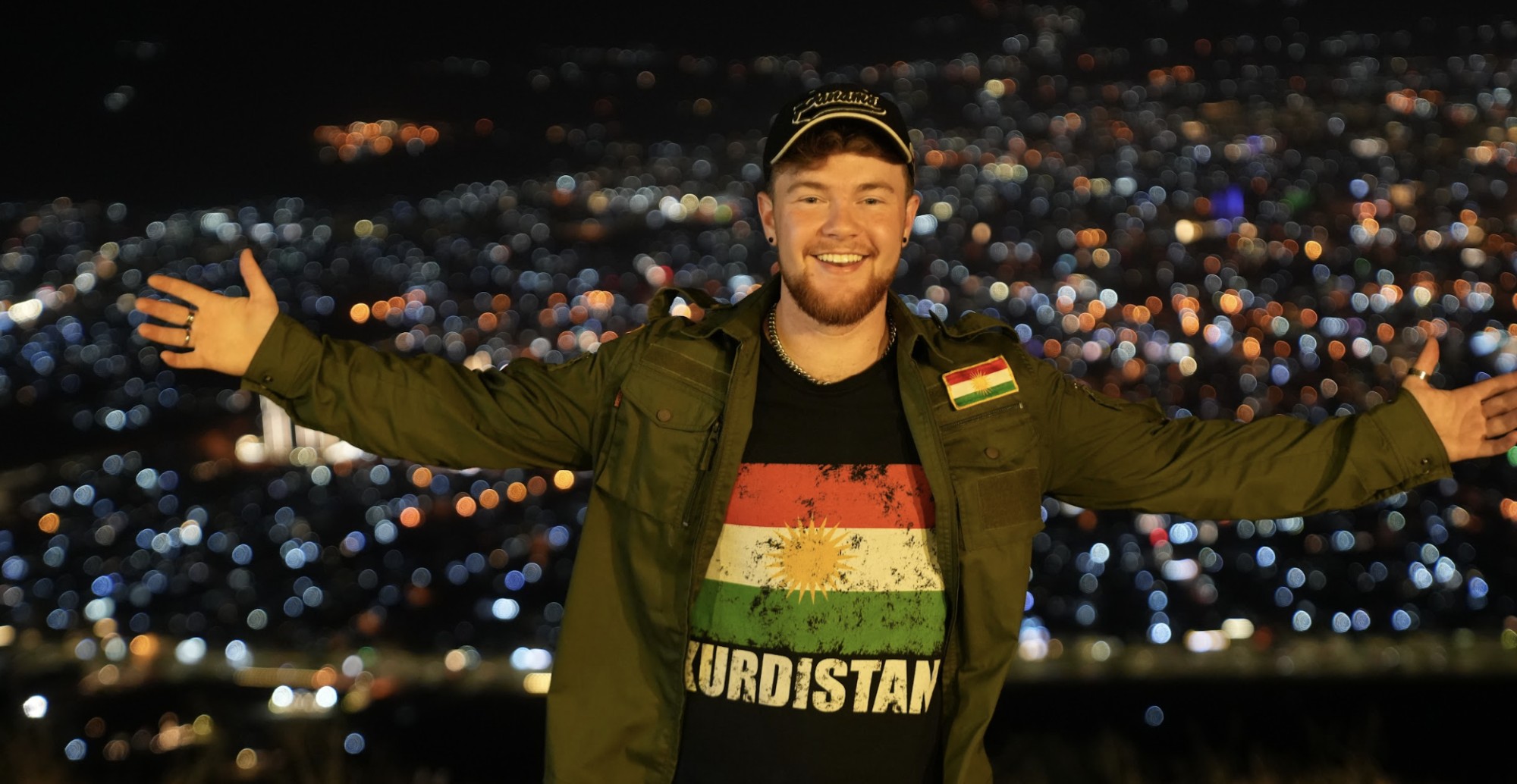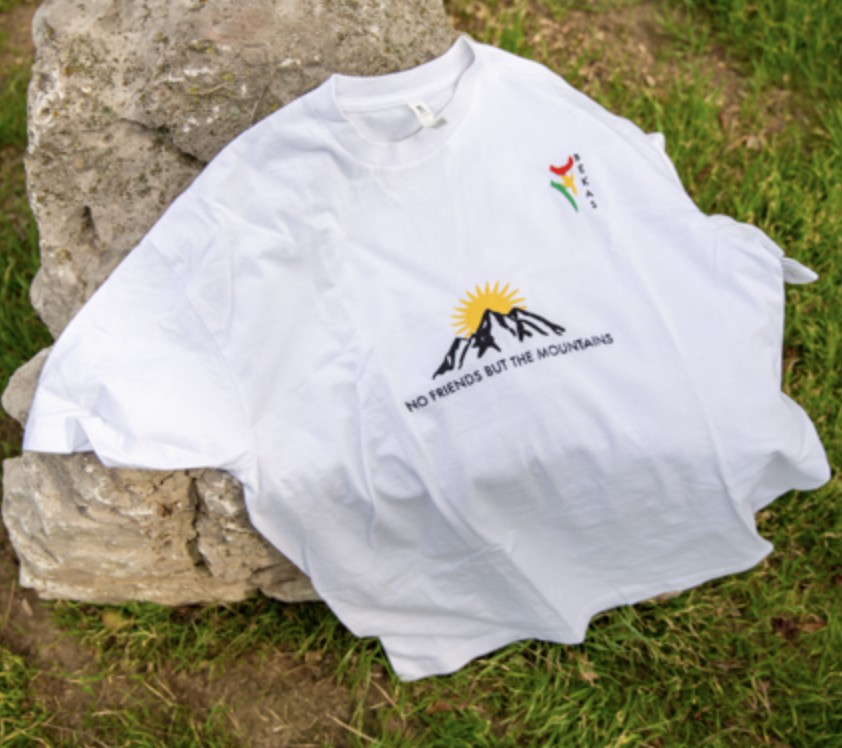Hailing from Bingol, Turkey, the young Kurdish film director, screenwriter, and producer Mehmet Ali Konar has already made a name for himself with his 2017 film Colorless Dream (Hewno Bereng) and his 2020 film The Dance of Ali and Zin (Govenda Ali Dayka Zin), which attracted large audiences and received enthusiastic reviews from moviegoers and critics.
These two Kurdish films also garnered Konar many awards at national and international festivals, including the Yilmaz Guney Award and the SIYAD Cuneyt Cebenoyan Award at the Adana Altin Koza Film Festival, as well as other awards at the Ankara and Istanbul Film Festivals, London Global Kurdish Film Festival, and the International Duhok Film Festival.
Looking beyond the awards to the subject matters of his films, it is Konar’s use of the Kurdish language and its dialects in these movies that truly astonishes. By capturing the mosaic of dialects that have resulted from the borders drawn in the 20th century and linguistic oppression, Konar’s films provide a deeper and more nuanced window into the contemporary Kurdish experience.
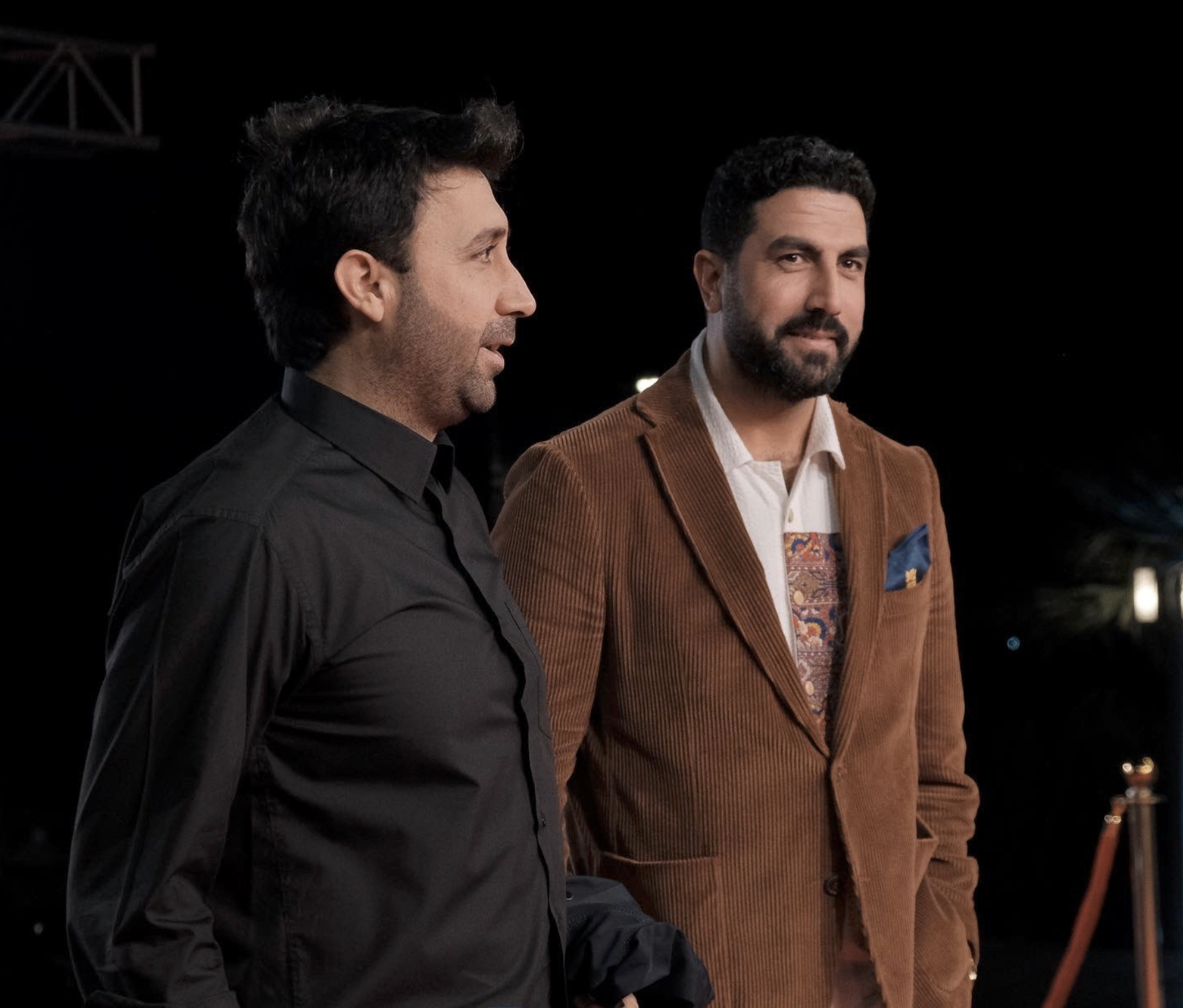
Mixing milieux
Konar began his career after graduating from Marmara University in Istanbul in 2005. He first worked as an assistant director in feature films and documentaries and wrote television comedies. In addition to Kurdish, he speaks Turkish, English, and Italian. He has shot two feature films, Colorless Dream and The Dance of Ali and Zin, and is currently working on his third, which will be released soon.
Outside of the Kurdistan Region of Iraq and the Rojava autonomous administration, the fact that the Kurds do not have a central government has impeded the standardization of the Kurdish language. Even in 2024, Kurds in Northern Kurdistan (southeastern Turkey) are still deprived of the right to receive education in their native language. This has made it very difficult for speakers of different dialects to understand each other, so much so that some dialects have progressed toward becoming a different language.
Since 2011, several Kurdish language and literature departments have opened in universities in Turkey, namely in Mardin, Diyarbakir, Dersim, Bingol, Van, and Mus. Such courses allow students to become familiar with other dialects of Kurdish in addition to their own, which promotes communication and exchange between dialects.
For instance, in Turkey, it is common to hear Kurds say things like: “I understand but cannot speak;” “Your Kurdish is a little different;” “The Kurdish they speak there is different;” “I understand Bingol’s Zazaki, but I have difficulty understanding Dersim’s;” and so on. Even though Kurdish is already divided into several dialects, we continue to divide the language at the level of discourse.
Konar’s two films, both in Kurdish, were made in such a context. Since his first film was predominantly in Zazaki, it can be considered the first feature-length film in this dialect.
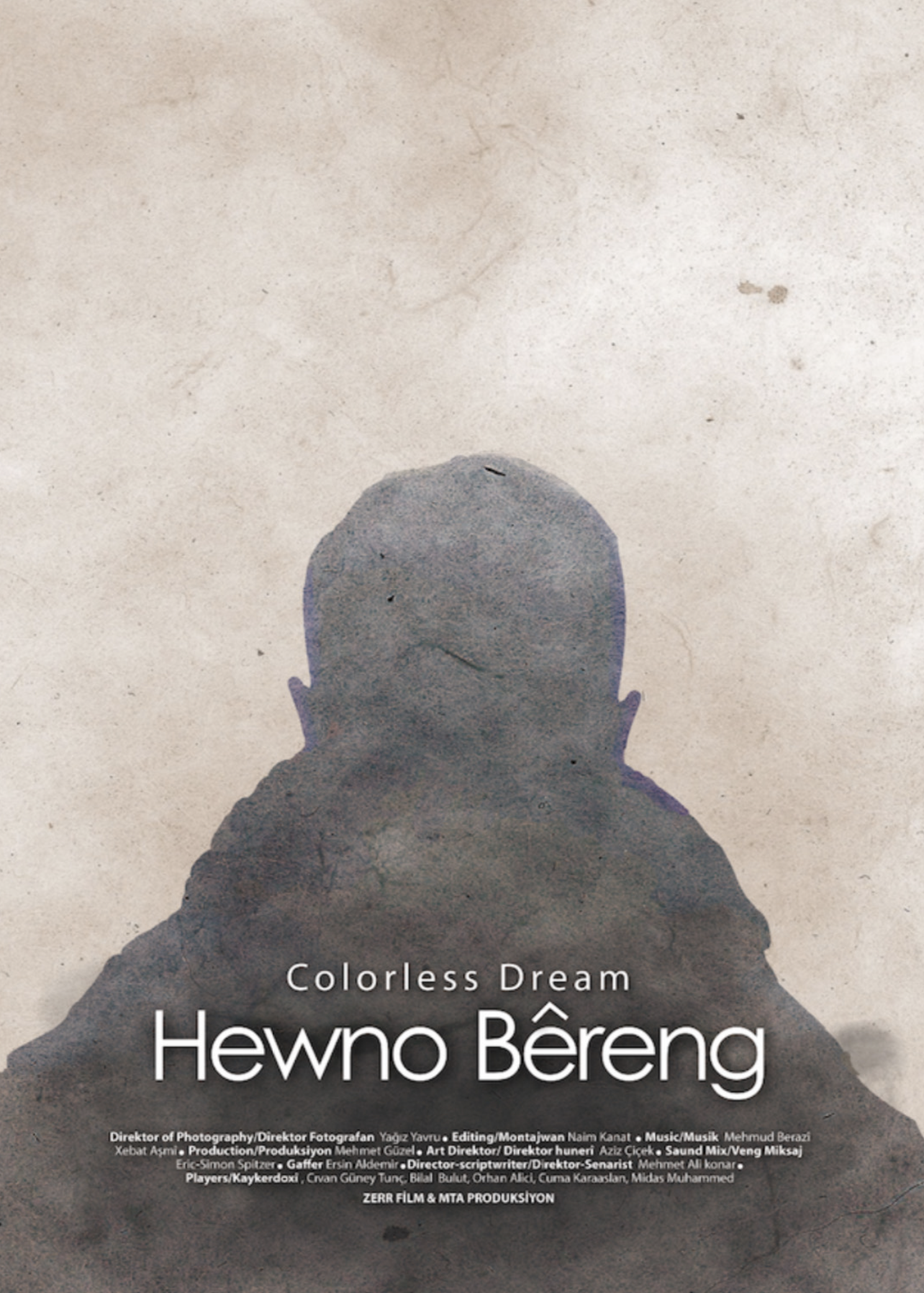
Colorless Dream
Colorless Dream tells the story of Mirza, played by Civan Guven Tunc, who grows up in Diyarbakir, Turkey, in the 1990s. Already a quiet child, he becomes extremely withdrawn after the death of his mother, with his depression fed by nightmares that bifurcate his sleeping and waking life. However, all this changes when his brother’s friend Mir Ehmed, played by Bilal Bulut, visits their home and stays for an extended period. Eventually Mirza comes to his senses, even if only a little, and feels better, but his nightmares reappear and take over his life again but in another form.
Colorless Dream allows audiences to witness the bittersweet journey of Mirza, brought to life through a masterful performance by Tunc, and draws a hopeful portrait for the director’s future works with its powerful script and poignant cinematography. It is also a heart-wrenching elegy to the 1990s, and the spiral of violence that passed like a bulldozer over the people living in Kurdish areas.
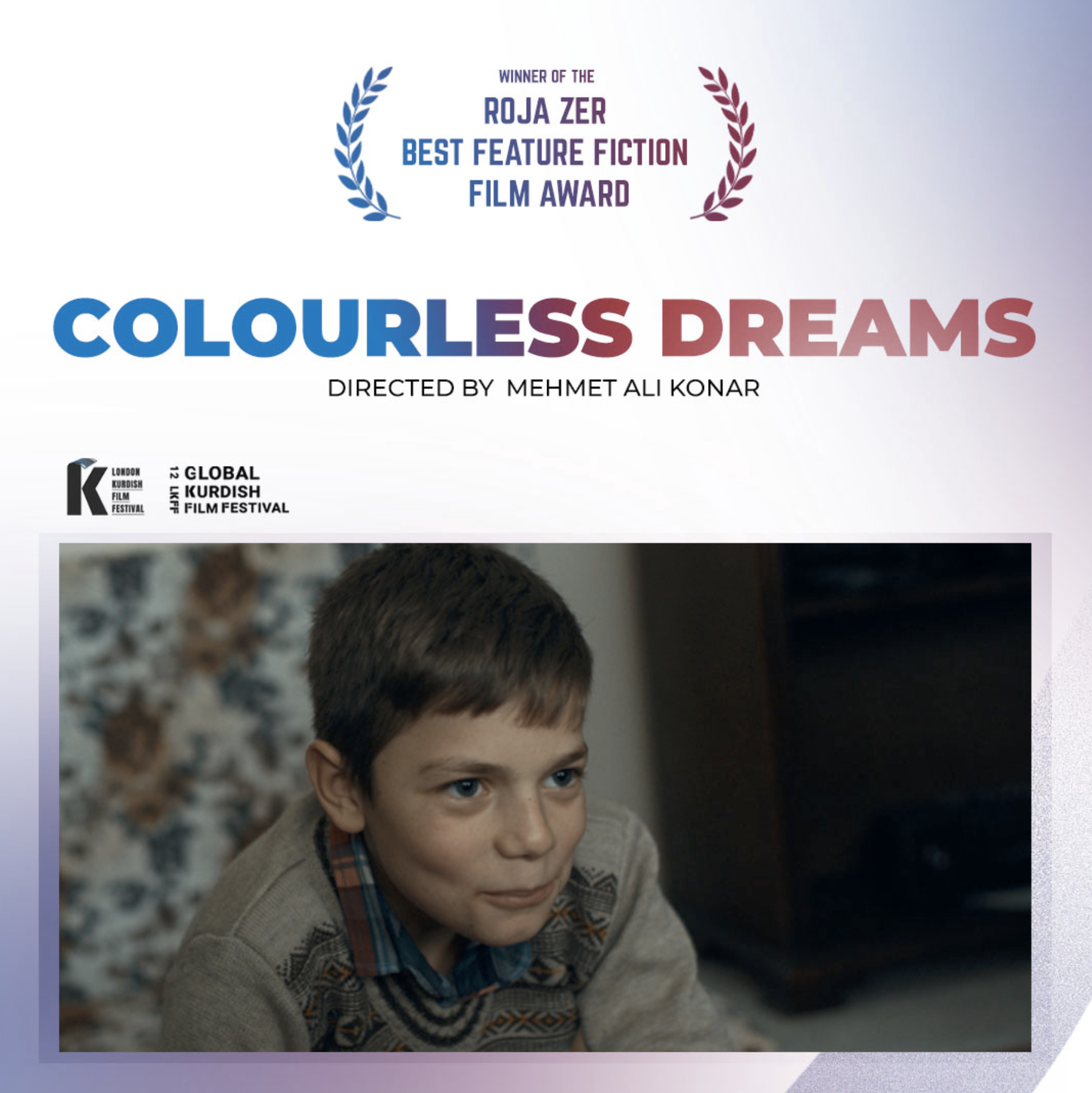
The Dance of Ali and Zin
The Dance of Ali and Zin unfolds in a quiet village in Bingol Province but during a difficult decade for all people living in Kurdistan. Mother Zin (Dayka Zin) lives with her son Isa, a beekeeper, as well as her daughter-in-law, daughter, and two grandchildren. Zin decides to hold a wedding for her young son Ali, who was recently killed, but problems arise between Zin and her family. The reactions and reservations of the village people, especially the imam, the village chief, and the village elders, regarding this unusual wedding request, challenge Isa and Zin.
Konar does not disappoint, taking his cinematic production to another level. While Zin is making wedding preparations for her murdered son despite the threats from the village community, she buys a healthy ram and the best rice she can find for the wedding meal. We watch as she carefully removes the stones from the rice and hires the best dancers and musicians. In the final scene of the movie, she sobs, hugging Ali’s cardigan that had been knitted by his aunt, a powerful reminder of her beloved son. This moving scene is a perfect demonstration of the point made by Italian neo-realist Cesare Zavattini: that reality itself is extremely lively and interesting.
The Dance of Ali and Zin ultimately captures the sorrowing reality of life for Kurds in recent decades. Kurdistan is the land of broken lives and incomplete tales, where the perpetrators are unknown. With the state of emergency declared in the early 1990s, the Kurdish areas of Turkey were declared an emergency region and governed according to harsh laws. It is a known fact that people were “lost” in acid wells, and often their bodies could not be found, while others were buried anonymously in mass graves. The deceased were sometimes buried inside pavement or on the roadside, and sometimes sent to their relatives by cargo. Compared to those who could not have funeral for their loved ones because of the horrific and painful ways in which they died, those who could have a funeral at least had more closure and could mourn properly. It is unsurprising that relatives of the missing continue to wonder about the fate of their loved ones.
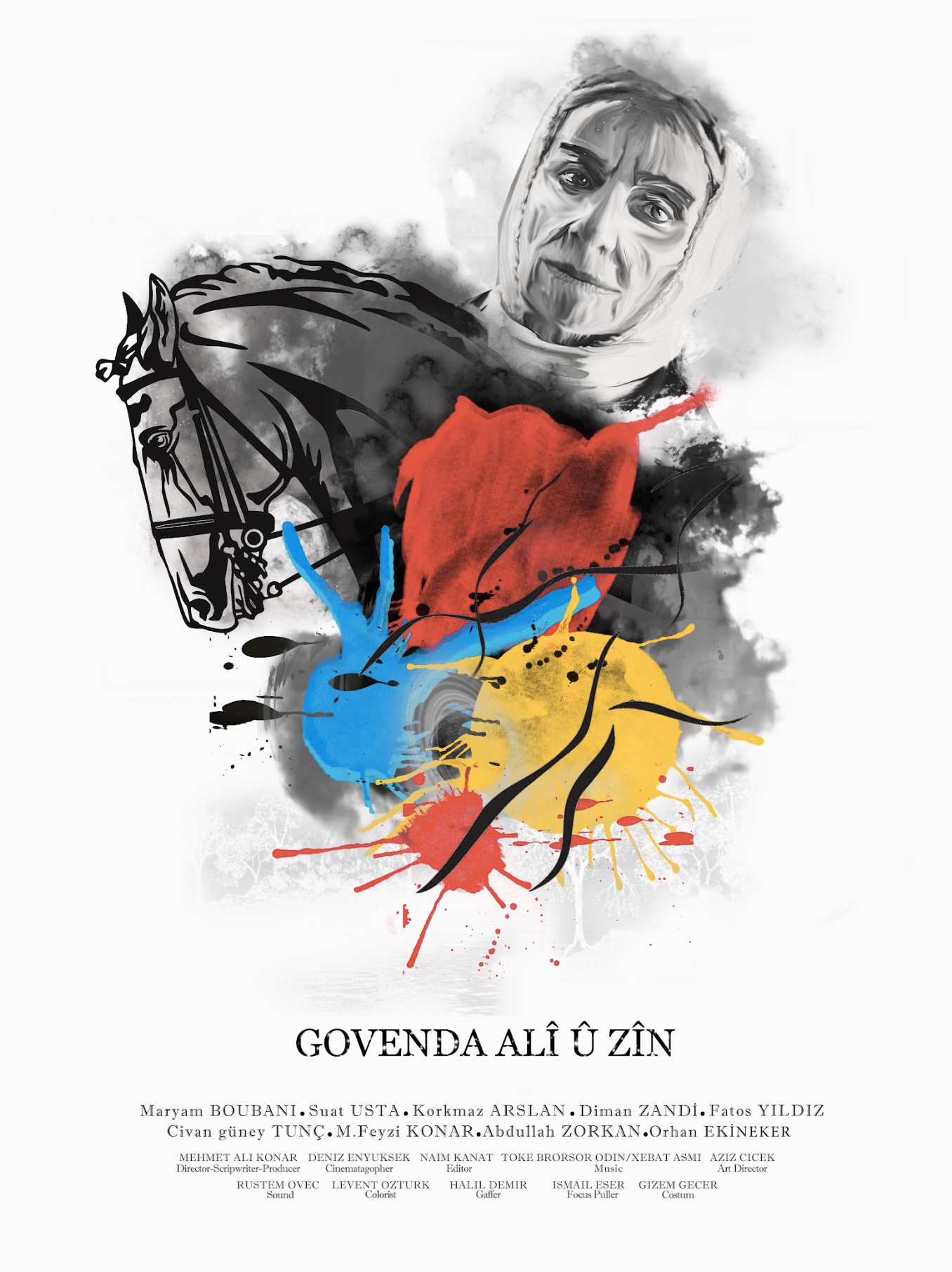
A cornucopia of Kurdish dialects
It is well known that Kurdish-speaking people mainly live in Turkey, Syria, Iraq, and Iran, as well as in various cities that are under the political domination of former Soviet countries. This reality makes it unsurprising then that the Kurdish language is divided into various dialects, which have drifted apart due to history and the national borders that divide Kurdish populations. At the same time, in Kurdish towns like Lice, Siverek, Dersim, and Bingol, two dialects of Kurdish are used together, with locals knowing and understanding both.
For instance, in Colorless Dream, the imam who prepares amulets and Mir Ehmed speak Kurmanji, while Mirza, his classmates, and family members speak Zazaki. Meanwhile, in The Dance of Ali and Zin, Zin speaks Sorani, Isa and others speak Kurmanji, and Zin’s grandson and Isa’s brother speak Zazaki. Nevertheless, these characters have no difficulty understanding each other. Watching the films, I realized once again how similar the Kurdish dialects are to each other.
When talking about the use of various dialects in cinema, it is impossible not to mention Federico Fellini, one of the leading neo-realist directors, who similarly mixed Italian and local dialects in his 1973 film Amarcord. A lot has been written about the use of language and dialect in Fellini’s films, but I have not come across any study about this element in Kurdish films.
It should be noted that Konar’s films are not the first to mix Kurdish dialects. The 2013 film My Sweet Pepper Land by Hiner Saleem in 2013 also features characters speaking Kurmanji, Sorani, and Zazaki. Konar’s films build on this dynamic by removing the political and artificial boundaries between the various Kurdish dialects and offering a unified and integrated Kurdish linguistic utopia. His masterful films prove that the people who divide the Kurds are misguided, and his attitude toward language sensitivity in cinema can be fairly termed as anti-colonial and anti-national.
